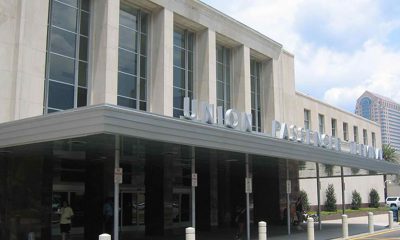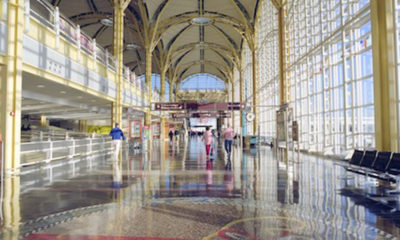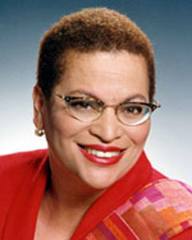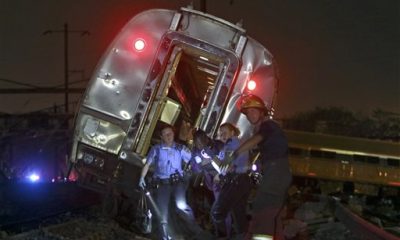Technology
Amtrak to Operate System that Might Have Prevented Crash
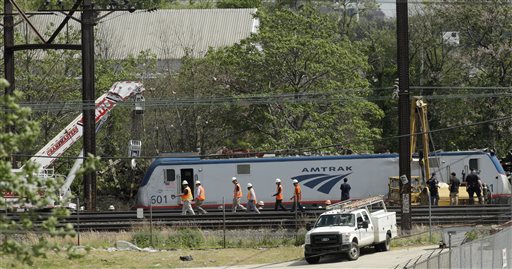
Joan Lowy, ASSOCIATED PRESS
WASHINGTON (AP) — The deadly Amtrak derailment near Philadelphia appears to be yet another accident that didn’t have to happen.
It could have been avoided if a long-sought safety technology had been operating on its tracks and trains, according to information gathered by accident investigators.
On Thursday, Amtrak President Joseph Boardman said the nation’s passenger railroad will begin operating the technology, called positive train control, throughout its busy Northeast Corridor by the end of the year. The technology was installed on the tracks where the accident occurred, but it had not been turned on because further testing was needed, he said in an interview.
Seven years ago, Congress gave Amtrak and freight and commuter railroads until the end of this year to install the technology, on their trains and tracks. But few railroads are expected to meet the deadline. Now lawmakers are proposing to give railroads another five to seven years to get the task done.
The technology used by most railroads relies on GPS, wireless radio and computers to monitor train position. Amtrak’s system uses transponders, which emit transmit information through radio signals. Both types of systems can automatically brake to prevent derailments due to excessive speed, collisions with other trains, trains entering track where maintenance is being done or going the wrong way because of a switching mistake. It’s all aimed at preventing human error, which is responsible for about 40 percent of train accidents.

A preliminary review of the Amtrak train’s event data recorder, or “black box,” shows it was traveling at 106 mph in an 80 mph zone just before it entered a curve where the speed limit is 50 mph, according to National Transportation Safety Board investigators. The train’s engineer applied maximum braking power seconds before the crash, but it was too late.
At least eight people were killed and about 200 injured in the derailment.
“We are very keen on positive train control,” NTSB board member Robert Sumwalt. If such a system had been in operation, “this accident would not have occurred,” he told reporters.
The Philadelphia accident shares similarities with a 2013 derailment in New York on the Sunday morning after Thanksgiving. A Metro-North commuter train derailed in the Bronx, killing four and injuring dozens of others. The train’s engineer had fallen asleep and failed to slow the train from 82 mph to the maximum authorized speed of 30 mph as it entered a curve. An NTSB investigation concluded that crash would also have been prevented by positive train control.
Not counting Tuesday’s derailment, the NTSB has investigated 29 passenger and freight train accidents that officials say could have been prevented by positive train control since 2004. Sixty-eight people died and more than 1,100 were injured in those crashes. The board has been urging installation of the technology, or its precursors, for 45 years.
In 2008, a month after a commuter train and a freight train collided in Chatsworth, California, killing 25 people, Congress passed a law requiring that positive train control be installed by Dec. 31, 2015. But railroads have long complained that complications will prevent them from meeting that deadline.
In March, the Senate Commerce, Science and Transportation Committee approved a bill that would give railroads until 2020 to install the technology, and another two years after that if they need more time. The Brotherhood of Locomotive Engineers and Trainmen, which opposed the bill, complained at the time that some of its provisions would make it virtually impossible for federal regulators to ever force freight railroads to implement the technology.
The bill’s key sponsors — Sens. John Thune, R-S.D., Roy Blunt, R-Mo., Bill Nelson, D-Fla., and Claire McCaskill, D-Mo. — have each received more than $100,000 in contributions to their campaigns and political committees from the rail industry over the course of their careers in Congress, according to the political money-tracking website OpenSecrets.org.
Several of the senators said in statements or through their aides that reports by government agencies show railroads need more time. One of the hurdles is getting all the railroads to agree on systems that will work on everyone’s tracks despite differing policies and operations. Such interoperability is necessary because freight railroads frequently operate on each other’s tracks. Commuter railroads and Amtrak also often operate on freight rail tracks.
Amtrak has been one of the more aggressive railroads in installing the technology. So far, the system is in operation from Boston to New Haven, Connecticut; from New Brunswick to Trenton in New Jersey, and from Perryville, Maryland, to Washington. It has also been installed on some routes in the Midwest. Amtrak has spent $110.7 million since 2008 to install PTC.
An older, less-robust technology that can also slow trains if they go too fast called automatic train control was installed on southbound tracks through the area where the derailment occurred, Boardman said. However, the technology was never added to northbound tracks through the site because many years ago a decision was made that it was unlikely a train would be going fast enough to risk derailment, he said.
“For decades we have seen preventable derailments and collisions occur,” said former NTSB Chairman Deborah A.P. Hersman. “If we do not implement technology such as PTC to prevent these events, we will continue to see them for the foreseeable future.”
One of the obstacles is the cost to industry of implementing positive train control, estimated at more than $10 billion. A Republican-controlled House panel approved deep spending cuts to Amtrak’s budget on Wednesday just hours after the Philadelphia accident. An attempt by Democratic lawmakers to boost Amtrak spending by $1 billion was rebuffed.
___
Follow Joan Lowy on Twitter at http://www.twitter.com/AP_Joan_Lowy.
Copyright 2015 The Associated Press. All rights reserved. This material may not be published, broadcast, rewritten or redistributed.
###





